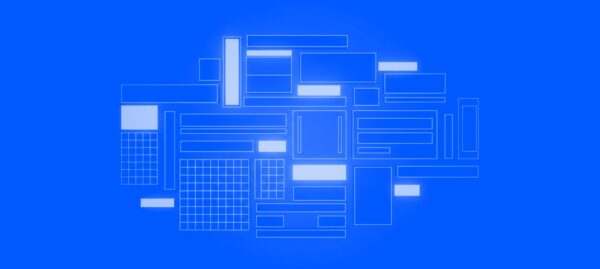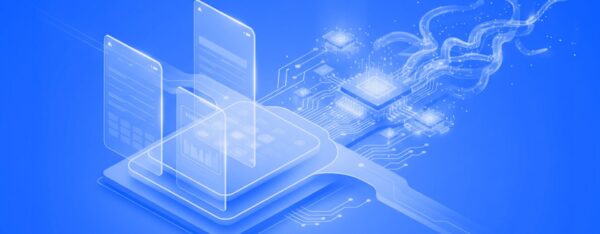Unstyled Components: A Must for Modern Web Applications
Jonathan Felipe de Oliveira | Dec 23, 2025

Do you have your next app idea fleshed out, designed, and ready to go into development?
Now it’s time to figure out how you’re going to bring your app into the world, and here’s where some big questions around technology arise.
Perhaps you’re clear on the front-end, but you are unsure which back-end technology to use. There are countless programming languages and web frameworks out there — you can spend weeks looking at Flask vs. Django vs. Node.js comparisons and still not know which way to go.
With all the options open to you, the question is, why use the Django framework for your app and would it best suit your business needs?
The Django web framework can be used for both front-end and back-end web development using the Python programming language.
We call it a “framework”, but really it’s easier to imagine as a sort of library or catalog — containing tools, packages, and extensions that are pre-programmed and ready to use in any web dev project. If you were to run Python outside of the Django framework, you’d need to code and develop each of these modules from scratch instead.
So is Django a part of Python? It’s a question a lot of clients and app owners ask.
Django was developed using Python. However, it’s a product and enhancement of the language, more than a part of the technology itself. There are other Python frameworks with which Django competes, and Python can exist outside of the Django framework.
Django is a high-level web framework that encourages rapid development and clean, pragmatic design. Built by experienced developers, it takes care of much of the hassle of web development — meaning you can focus on writing your app (and solving users’ needs) without reinventing the wheel.
Of course, Django isn’t the only web framework to boast these benefits, so what makes Django stand out from the rest?
Python is a powerful, general-purpose programming language that can be applied to many different software development use cases. It has an elegant syntax and uses simple English keywords, allowing programmers to easily read and understand Python code.
Django is a framework built on top of the Python language, using Python tools to streamline the development process. This framework helps your developers get up and running; you’ll achieve more in less time and with less complexity as well.
Python is also one of the most prominent programming languages in use today. There’s never a shortage of great Python programmers out there to help make your app a success.
Django is a highly opinionated web framework — it has been built and designed to do things in a particular way. It favors certain patterns and has one “right” way to handle tasks; developers can’t stray as far from the framework as others allow.
This means that Django code is kept clean and straightforward. Any developer you work with can come onto your team, read your code, and follow your train of thought. Since Django code is standardized, you can scale your team and quickly onboard productive new members.
It’s this synergy that’s inspired tight-knit Django and Python communities. It’s easy for developers to share code online and help fellow developers out of a bind. In most cases, it’s easy to integrate ideas from the Django community to speed up the development process.
Take a look at this curated list of Django packages in Github, for starters.
Together, this results in an app that’s easy to maintain and upgrade.
You would be hard-pressed to find any Django application that didn’t include pre-built components from the Django framework. One of the great things about the framework is that much of the hard work is done for you, that’s why Django is known as a “batteries-included” web framework.
Whether it’s an admin section, membership system, or SEO, Django has what you need.
Security comes as standard, too. Django’s default security measures offer sufficient protection for many businesses, and the framework is easily extended to cover additional compliance needs as well.
Thanks to Django’s large and growing community, not only are these security measures tried and tested, but they are continually updated too — keeping your app secure, and reducing its vulnerabilities, well into the future.
Of course, you aren’t limited to the pre-built libraries Django offers. The framework is as extensible as you want it to be. The pre-built libraries are there to save you time and money while allowing you to focus on your app’s unique functionality.
Our work with Skyroam and Singular University is a testament to this. Django’s toolset gave us the tools necessary to build extensive feature sets for our clients.
You might be able to get away with an under-optimized app in the early days. However, once you start adding new features and getting more traffic, modernizing legacy apps can become a nightmare to maintain.
Django is scalable because of its simplicity. By sticking to the conventions laid out in Django’s development framework, Django makes it easy for developers to plug new features into your product with minimal effort and build more scalable applications.
This simplicity also applies to server hardware. You can scale it by adding more servers or upgrading the capacity of existing servers, allowing you to adapt fast, be budget-aware, and grow your infrastructure capacity only as needed.
It hasn’t always been easy to work with data. If you have complex data requirements, you’re stuck with writing complicated database queries to find the data you need.
Django solves this problem with a powerful object-relational mapping (ORM) system. An ORM system removes the need for database code from developers and allows them to write in the programming language they know best.
This simplified approach to data management allows your development team to create complex queries on their own without reaching out to database administrators. They’ll be able to get more done and adapt more quickly to your evolving data needs.
As we’ve covered already, Django was developed using Python. But does that make it better than frameworks using other languages like PHP?
To say whether Python is better than PHP means picking between two excellent options. Both Python and PHP are, without a doubt, the most popular and preferred programming languages for backend web development — and each has its pros and cons.
That said, if we were forced to pick a side, then here’s what we’d say:
There isn’t a one-size-fits-all solution in the web development world, and Django is no different.
Django is our preferred web framework here at Cheesecake Labs — we’ve amassed a wealth of collective intelligence using Django across 150+ development projects for over 10+ years. It’s the framework we trust. But we can be flexible when needed.
Sometimes it’s advantageous for our clients, and their projects if we take a different route. Perhaps there’s a library or service that’s core to the app and it integrates better with Node.js, or the app we’re building already has an existing codebase written in Golang.
Outside of those scenarios, though, Django is well-suited for almost any application you can think of. Its feature-set gives projects a running start and it’s extendable enough to let you build out any feature you can imagine.
And considering Instagram and YouTube use Django to help their sites run efficiently, then you know you’re in good company.
With all the benefits Django brings to the table, there’s one that stands out with Cheesecake Labs: we’re Django experts. Our development team knows the ins and outs of the Django framework and can use it to create whatever app you need.
Are you ready to get started with your project? Get in touch today and let’s get the ball rolling. And yes, the Django movie is definitely worth watching too!

Settled down from travelling to build some good applications. Feels comfortable developing on both ends, though lately tends to the front-side of the moon.


